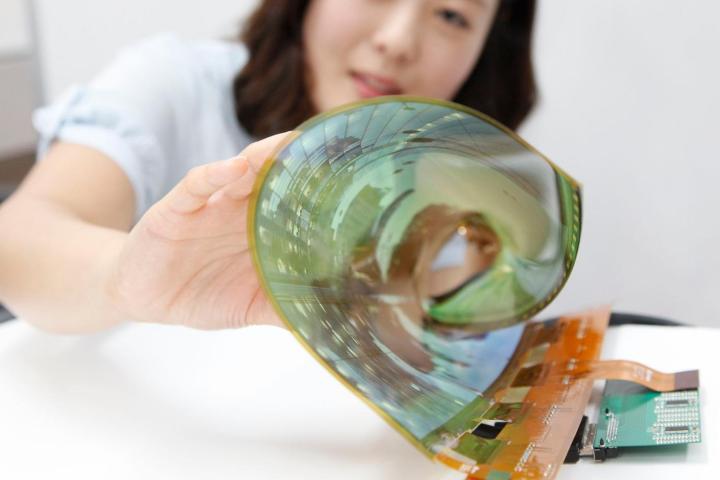
Apparently, Apple is already envisaging the iPhone of 2018 — which if current nomenclature trends are followed, will be the iPhone 8 — with a foldable screen, a technology that’s currently being developed by the two Korean rivals. We’ve been hearing about foldable displays for a while, but they’ve always stayed in the realm of fantasy, often used only as eye-catching tech demos at trade shows.
The report says the wait for foldable screens is almost over, and claims both Samsung and LG have ‘perfected’ a viable production version, complete with a body to match. This suggests the other technical barriers — flexible glass, batteries, circuit boards, and so on — have been passed, and we’re a major step closer to being able to buy a foldable, full touchscreen phone.
Shaping the future

Apple doesn’t make screens, it buys them from other companies. Samsung and LG are the two biggest names in display tech, and have a huge investment in foldable, flexible displays. If Apple wants a foldable iPhone in three years time, some serious negotiations will have to take place. While few businesses interested in making a profit will say no to Apple, we’re talking about a major change in phone design, and one neither Samsung or LG will be willing to readily give up. At least, that’s the position taken by the BusinessKorea report.
Outside of the iPhone 8 being foldable, there’s substantial evidence to back up several parts of this report. A previously published roadmap of tech developments from LG showed it wanted small foldable and rollable screens out in 2017, and more recently has invested a billion dollars in a factory dedicated to producing flexible and foldable displays. Samsung has also been hard at work, with an executive from the company saying it expects foldable phones to be ready for commercial launch sometime in 2016, before its own Project Valley foldable phone was leaked.
Apple is rarely first on the scene with ground-breaking new design technology, but a foldable device that combines a large screen phone and mid-size tablet into one, will represent the biggest change in how modern smartphones look that we’ve seen in several years. The future negotiations which are hinted at in this report may decide, quite literally, the shape of things to come.
Editors' Recommendations
- This one Apple Fitness feature completely changed how I exercise
- An Apple insider just revealed how iOS 18’s AI features will work
- iPhone 16: news, rumored price, release date, and more
- iPhone SE 4: news, rumored price, release date, and more
- 3 reasons why I’ll actually use Anker’s new iPhone power bank




